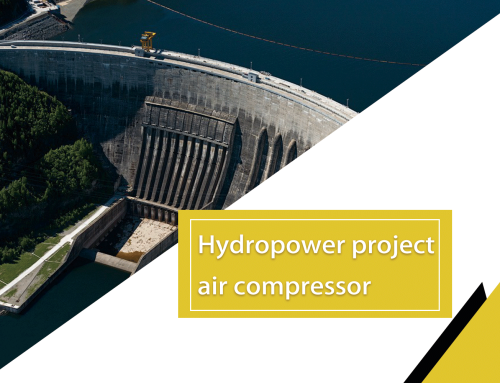
In today’s manufacturing landscape, the utilization of air compressors has transitioned from oil-lubricated to oil-free models. Among the industries favoring oil-free air compressors, the glass manufacturing sector undoubtedly ranks within the top three. So,
what are the specific applications of oil-free air compressors in the glass industry?
Let’s delve into it further.
Oil-free air compressors, known for their eco-friendly and energy-efficient attributes, have gained recognition among numerous glass manufacturing enterprises. Particularly, PET bottle blowing companies find them advantageous.
Learn about the advantages of oil-free, water-lubricated air compressors:
If PET bottles are used for filling food, drugs and drinks, there are higher requirements for air cleanliness – no bacteria, no dust and no oil.
Water lubrication oil-free screw air compressor uses pure water as the lubrication, sealing and cooling medium of the host, which can ensure that the output air does not contain a drop of oil. Before entering the compressor chamber, the air will pass through the air filter element to exclude most of the dust, and the higher requirements of sterility and dust-free can also be completed through the supporting after-treatment equipment. KWI Series medium pressure oil-free screw air compressor series pressure reaches 4Mpa, the displacement range covers 6m³/min-42m³/min, to meet the needs of most of the blowing industry.
PET bottle products, such as commonly encountered cola bottles and various beverage containers, demand high standards of environmental friendliness and safety for direct consumption.
In the past, during PET bottle blowing processes, even a trace of oil within the compressed gas produced by oil-lubricated screw air compressors could lead to oil mist entering the bottles, posing potential health hazards. To circumvent such concerns, the oil-free air compressor emerged as a solution. Oil-free air compressors have diverse applications within the glass industry, including several key areas:
- Glass Cutting: High-pressure air is used to eliminate dust and debris from the glass surface during cutting, ensuring cutting precision. Employing oil-free air compressors provides clean, oil-free, and odorless compressed air, safeguarding the cutting quality by mitigating the impact of oil contamination.
- Glass Sandblasting: Compressed air is used to propel sand particles onto the glass surface during sandblasting. Oil-free air compressors prevent oil contamination on the glass surface, ensuring stable air pressure and flow for effective sandblasting results.
- Glass Drilling: High-speed rotating drills and cooling fluids are used for glass drilling. Oil-free air compressors deliver steady air pressure and flow to drive the drill and provide clean compressed air for cooling purposes.
- Glass Film Application: Compressed air is employed to attach film to glass surfaces and expel air during the process. Using oil-free air compressors ensures clean, oil-free, and odorless compressed air, mitigating the effects of oil contamination on the film.
In summary, oil-free air compressors find wide-ranging applications within the glass industry, offering clean, stable, and reliable compressed air. They uphold the quality and efficiency of glass processing.
In particular, we share the main uses of compressed air in the glass industry:
Combustion Enhancement:
Primarily employed during the combustion of molten glass in production lines, this application aids in achieving thorough overall combustion through medium atomization. It is also used for purging residual material within the idle oil (powder, natural gas) chamber during firing transitions and for cooling and temperature protection of the chamber.
Medium Conveyance:
Mainly used for conveying materials through pipes, such as conveying and blowing coke powder. For instance, in the grinding workshop, ultra-fine powder is transported to various usage areas through compressed air, ensuring reliable conveyance speed, reducing production transport costs, and preventing the dispersion of ultra-fine dust into the surrounding environment during transportation.
Equipment and Instrumental Pneumatics:
Applied to pneumatic devices in various workshops, such as air cylinders and pneumatic ball valves for operational air sources, as well as instrument equipment like cooling and cleaning for cameras and lenses.
Environmental Dust Removal System Backflushing:
Used for backflushing of bags or filter cartridges in dust collection equipment like dust collectors and self-cleaning air filters. For example, in semi-dry desulfurization systems, backflushing of the top bags in the dust bin, ash collection systems, effectively filters particles from the air.
In environmental denitrification systems, it’s used for purging the catalyst module in the denitrification tower. Compressed air purging reduces the pressure difference of the flue gas entering and exiting the denitrification tower, facilitating comprehensive reaction between the flue gas and the catalyst, thus reducing nitrogen oxide content in the flue gas.










